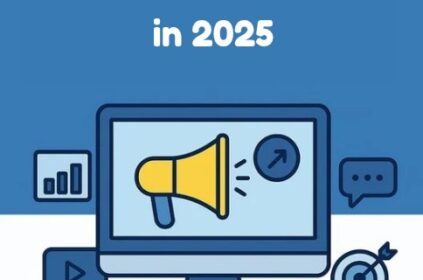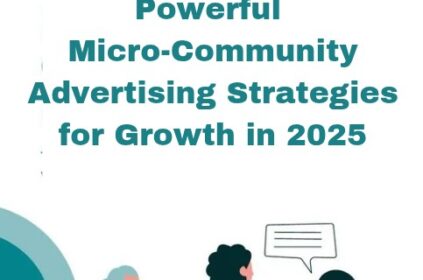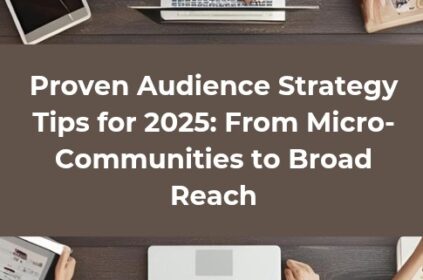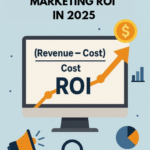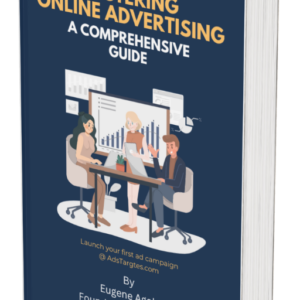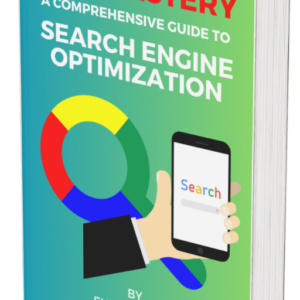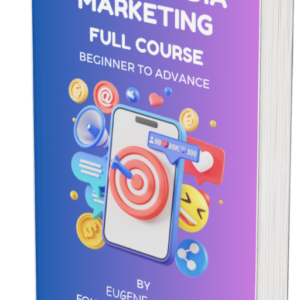Brands will spend an estimated $32.55 billion on creator collaborations this year—up 11 percent from 2024, with nearly two-thirds shifting budget from generic display to performance-tracked influencer ads. Three macro forces explain why:
#1. Platform signal loss. Cookie deprecation makes influencer-native content amplified through ad managers the fastest path back to precise targeting.
#2. AI workflow gains: Automated creator discovery and predictive pricing shrink campaign setup from weeks to hours, letting marketers test more influencer marketing strategies for paid advertising in a single quarter.
#3. Video retail: Shoppable short-form clips on TikTok, Reels, and YouTube Shorts routinely beat brand-made ads on click-through and view-through rates. CPMs on TikTok still start around $0.50—a fifth of prime-time TV inventory .
Together, these forces explain the top influencer marketing trends in 2025: ROI-first briefs, always-on micro partnerships, and media dollars moving to creator-whitelisted ads.
Grasping this context is step one before choosing specific influencer marketing strategies for paid advertising that fit your goals.
Where Micro and Nano Creators Outperform
While mega-influencers still dominate reach, engagement now peaks in the 10k–100k follower band.
Micro creators average 3–4 × engagement versus celebrity accounts, giving media buyers a lower CPA when they amplify posts through Spark Ads or Meta Partnership Ads.
Vogue Business reports many consumer brands will channel up to 50 percent of their 2025 social budget into these smaller voices.
Embedding micro talent inside your influencer marketing strategies for paid advertising multiplies creative assets, keeps costs down, and builds trust with specialised audiences.
Master the Three R’s—Reach, Relevance, Resonance
The most-asked question remains: “What is the best strategy for influencer marketing?” In 2025, the most effective influencer marketing strategies for paid advertising still rely on the classic 3 R’s framework:
#1. Reach gauges potential impressions and audience size.
#2. Relevance measures how well the creator’s content and followers align with your product niche.
#3. Resonance evaluates historical engagement and actual influence—likes, comments, shares, and especially conversion behavior.
According to a longitudinal study by InfluenceHunter, campaigns that check all three boxes lift purchase intent by 28% compared to those focused on reach alone.
This is critical when applying influencer marketing strategies for paid advertising because weak resonance or mismatched relevance quickly dilute ROI.
Before committing to paid spend, implement a quantitative screen:
#1. Reach threshold: at least 1% audience overlap with your target demo.
#2. Relevance score: creator’s top-five content categories must match your product space.
#3. Resonance ratio: engagements per follower should outperform the platform median.
When a creator clears all three, they’re no longer just a good organic partner—they’re a viable asset to scale through paid ads.
This approach ensures that your influencer marketing strategies for paid advertising start with validated talent, not guesswork.
Practical Checklists to Score Creators
To operationalize this, assign a score from 0 to 5 for each of the 3 R’s. The total score gives you a clear, fast-read filter:
#1. Reach: 0 (negligible overlap) to 5 (major overlap with target audience)
#2. Relevance: 0 (off-niche) to 5 (core-aligned content themes)
#3. Resonance: 0 (below average engagement) to 5 (top-tier conversion or interaction rates)
Any influencer scoring below 10 out of 15 should be deprioritized or re-evaluated. Use this scoring method as a foundational layer when building out your influencer marketing strategies for paid advertising. It aligns your creative and media teams from the outset and reduces post-launch surprises.
This framework also answers a key query from rising creators: “How do I become an influencer in 2025?”
The answer is clear—grow measurable reach, stay deeply relevant to a niche, and cultivate consistent resonance.
Brands now prioritize performance, not just follower count, making this checklist just as useful to creators as it is to marketers.
Data-Backed Creator Vetting and Contracting
Fraud, mismatched audiences, and inflated quotes are still major risks in creator partnerships. To safeguard your media investment, begin with vetting. Use third-party tools or platform-native Brand Partnership tags to check for:
#1. Authentic follower growth (no sudden spikes or bot patterns)
#2. Audience location (≥70% in target market)
#3. Historical paid performance (ROAS, CTR, CPC)
Influencer Marketing Hub’s 2025 benchmark report shows that only 24% of brands still use flat-rate deals.
The majority now prefer hybrid compensation models—mixing fixed fees with CPA or performance bonuses—to align incentives and avoid wasted spend.
Influencer marketing strategies for paid advertising perform better when creators are invested in outcomes, not just impressions.
Contracts should clearly define payment triggers, usage rights, and platform access. Make whitelisting part of your initial agreement so you can legally boost content from the creator’s account—this preserves engagement and unlocks premium ad formats like Spark Ads or Partnership Ads.
With performance-based terms, brands get better ROI, and creators are more motivated to deliver high-quality, targeted work.
Structure matters. Before spending a dollar on promotion, your influencer marketing strategies for paid advertising should be backed by clean contracts and data.
Avoiding Hidden Costs
Always review contract terms before locking talent. Perpetual usage rights, exclusive category clauses, and unlimited revisions are common areas where creators charge more—sometimes 30–40% higher—if brands request too much control.
Many marketers unknowingly overpay here, draining funds that could go toward additional campaigns or creator testing.
To keep costs lean, define clear scopes: number of deliverables, usage windows (e.g. 6 months), and reasonable edit limits. This clarity avoids disputes and improves the creator’s willingness to collaborate.
By cutting unnecessary legal weight, your influencer marketing strategies for paid advertising remain nimble and scalable.
Freed-up budget can go toward smarter moves—like sequential retargeting, A/B testing formats, or repurposing UGC across other channels.
A transparent contract isn’t just a legal safeguard—it’s a budget strategy. And in 2025, smart contract design separates agile campaigns from bloated ones.
Creative Formats That Convert
Influencer content amplified via paid channels performs best when it looks and feels native.
Algorithms on TikTok, Meta, and YouTube now prioritize user-first storytelling over glossy brand aesthetics. Top formats in 2025 include:
#1. Spark Ads / Partnership Ads (Meta): Boost posts directly from creators’ accounts. These ads average 18% lower CPMs than traditional brand-page creatives while delivering stronger social proof.
#2. Short-Form Shoppable Video: On TikTok and YouTube Shorts, vertical clips under 30 seconds with pinned coupons or links drive 1.7× more purchases than static ads.
#3. Carousel Testimonials: Multi-frame content on Instagram—starting with a hook, showcasing results, and ending with a swipe-up code—outperforms single-image ads in conversion testing.
Effective influencer marketing strategies for paid advertising incorporate at least two of these formats per campaign, improving resilience across placements.
Importantly, always track performance separately: use UTM parameters to identify which videos convert via organic reach versus paid spend.
High-performing formats are rarely one-size-fits-all. You may find that Spark Ads outperform Shoppable Reels in Fitness, while the reverse is true for Skincare.
Test formats in cycles and double down on winners. Creative variation isn’t waste—it’s performance insurance.
Storytelling Without Fluff
In fast-scroll environments, every second counts. High-converting influencer marketing strategies for paid advertising follow a tested structure:
#1. Hook (0–2 seconds): A bold question, striking motion, or immediate payoff
#2. Problem: Highlight a relatable struggle or pain point
#3. Proof: Show the product in action or cite quick results
#4. Call to Action: Make the next step obvious (click, buy, try)
Avoid fluff, jargon, or elaborate scenes. Direct, visual content wins. In fact, TikTok reports that videos that show the product within the first 3 seconds outperform those that wait until the end. Your storytelling needs to do more than entertain—it must convert.
Creators should be briefed to stay on message but not overly scripted. Let their voice shine through while keeping structure in place.
This balance ensures your influencer marketing strategies for paid advertising feel natural, persuasive, and platform-native—exactly what drives results in 2025.
Campaign Workflows From Brief to Reporting
Running high-performing influencer marketing strategies for paid advertising requires more than good content—it needs operational precision.
The most effective brands now follow a repeatable six-step process that accelerates delivery while maintaining control:
#1. Strategy Week: Define campaign KPIs, target audience, platforms, and budget caps. Finalize which influencer marketing strategies for paid advertising you’ll deploy.
#2. Casting Week: Shortlist creators based on the 3 R’s, negotiate hybrid deals, and secure contracts with clear scopes and whitelisting rights.
#3. Creative Sprint: Provide guidelines, scripts, and brand messaging, but allow creators at least 30% freedom to ensure authenticity and platform-native storytelling.
#4. Review & Compliance: Check content for FTC-compliant disclosure, brand tone, and safety (no off-brand topics, hate speech, or competitor names).
#5. Launch & Monitor: Deploy top creatives within 24 hours of approval. Prioritize boosting posts that show organic lift first.
#6. Post-Mortem: Analyze performance split (organic vs. paid), note format winners, and document what worked for the next campaign.
Brands leveraging automation compress this loop from 45 days to just 21. That reduction frees room for more frequent testing—the backbone of scalable influencer marketing strategies for paid advertising in 2025.
Real-Time Optimisation Keys
Real-time feedback loops determine whether a campaign scales or stalls. For sustained results, install dynamic creatives inside your ad sets.
This allows new influencer videos to auto-test without resetting the learning phase—cutting costs and increasing agility.
Set strict guardrails to protect spending. Pause any ad if cost per acquisition (CPA) exceeds the target by 25% over two consecutive days.
Reallocate spend toward top-performing videos with ROAS above 1.8, and re-test weaker content with different copy or CTAs.
Overlay this logic directly onto your influencer marketing strategies for paid advertising dashboard—either via Meta Ads Manager, TikTok Ads, or third-party tools. Doing so ensures finance and media teams remain aligned on acceptable risk-reward ratios.
More importantly, it prevents waste. Without automated controls, brands often let underperforming ads run too long.
In 2025, real-time responsiveness isn’t optional—it’s core to staying competitive and maximizing returns from every influencer dollar you spend.
Budgets, Bids, and Scaling Across Platforms
Budget planning can make or break your influencer campaigns. A common best practice is to allocate 1–3× creator fees toward media amplification. This ensures that great content gets seen and doesn’t stall due to low distribution.
For TikTok, begin with $20–$30 per ad group per day. Current CPMs range from $3 to $12 depending on targeting depth, creative strength, and niche.
Meta’s Partnership Ads may warrant a 20% higher bid than brand-page ads because they inherit the creator’s engagement history—boosting relevance scores and lowering actual cost-per-click (CPC).
Set aside at least 10% of total spend to test new audiences. This includes interest-based groups, lookalikes of past engagers, and video-view retargeting pools.
These segments often outperform cold audiences over time and form a key growth layer in well-structured influencer marketing strategies for paid advertising.
Once performance stabilizes, repurpose top-performing assets into YouTube Shorts, Pinterest Idea Ads, or even email headers.
Multi-platform reuse increases creative ROI and stretches paid performance across your entire media ecosystem—especially valuable when budget cycles tighten.
Controlling Spend Creep
Scaling too fast without constraints leads to overspend. Combat this with automated rules inside your ad platform. For example:
#1. Pause an ad set if CPA exceeds goal × 1.3 for more than two days.
#2. Increase daily spend by 20% if ROAS exceeds 1.8 for 48 hours.
These parameters help performance buyers make fast, data-backed decisions without constant manual intervention.
More importantly, they add financial accountability to your influencer marketing strategies for paid advertising—ensuring campaigns scale only when justified by returns.
Dashboards should include daily performance snapshots segmented by creator, platform, and objective. Include pacing metrics and burn rates so finance teams can forecast accurately.
In 2025, spend control isn’t just about efficiency—it’s about trust. Brands with clean optimization logs are more likely to secure bigger quarterly budgets, while teams that miss pacing goals often face mid-campaign freezes. Smart controls avoid both.
Compliance, Brand Safety, and Performance Measurement
The regulatory landscape around creator partnerships has tightened. As of 2025, the FTC mandates both a “Paid Partnership” tag and an on-screen verbal disclosure in any audio-enabled influencer video.
Non-compliance can result in fines of up to $50,000 per violation. To avoid penalties, include disclosure language in every campaign brief and script—this step should be standard in all influencer marketing strategies for paid advertising.
Beyond legal compliance, brand safety remains critical. AI-powered moderation tools now scan creator captions, video descriptions, and comment threads for red flags like hate speech, misinformation, or competitor mentions.
This tech has reduced post-launch takedowns by up to 90% in sensitive categories like Beauty and Health.
On the performance side, vanity metrics like likes or follower counts no longer cut it. Focus on indicators that tie directly to outcomes:
#1. View-through rate signals how well the content holds attention; strong campaigns average 20–35%.
#2. Click-through rate reflects consumer intent; healthy ranges fall between 0.8–1.5%, depending on creative and platform.
#3. Cost per acquisition varies by niche but is the ultimate efficiency benchmark.
Embed these KPIs into your influencer marketing strategies for paid advertising so every campaign can be measured, optimized, and scaled with confidence.
UGC Rights and Long-Term Value
Influencer content shouldn’t expire after 30 days. Always negotiate six-month usage rights as a baseline, covering paid ads, email, landing pages, and even offline channels like print or OOH.
Too many brands leave ROI on the table by failing to extend the shelf life of high-performing content.
When whitelisted influencer videos are retargeted to cart-abandon or high-intent audiences, brands regularly see ROAS improvements of 1.5–2×.
This uplift proves that strong influencer marketing strategies for paid advertising aren’t limited to initial impressions—they’re content pipelines that power entire sales funnels.
You should also plan for asset reuse in upcoming campaigns. Save your top-performing creative in a shared repository, tag it with performance metadata, and revisit it when testing new formats or markets.
Influencer-generated content (UGC) is more than one-off collateral—it’s reusable, high-trust media that can plug into your full funnel. Make it part of your long-term strategy, not just your launch checklist.
Conclusion
The path to scalable returns lies in disciplined yet flexible influencer marketing strategies for paid advertising.
Start with trend awareness, apply the 3 R’s to vet talent, negotiate performance-linked contracts, and choose formats that align with platform norms.
Run tight workflows, protect spend with automated rules, and insist on FTC-compliant disclosures. Finally, measure everything beyond likes—focus on conversions and lifetime value.
Repeat this cycle, and your 2025 media plan evolves from one-off boosts to a performance engine powered by authentic creator voices.



